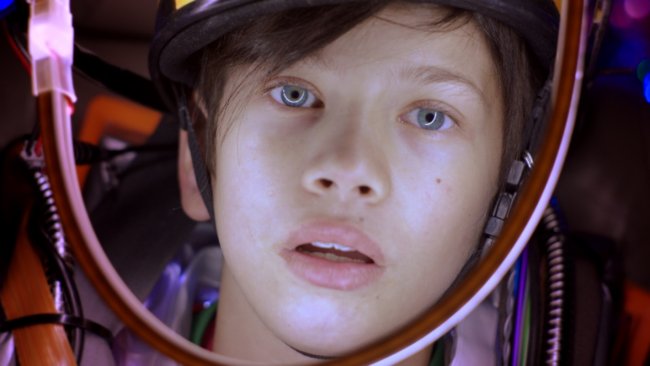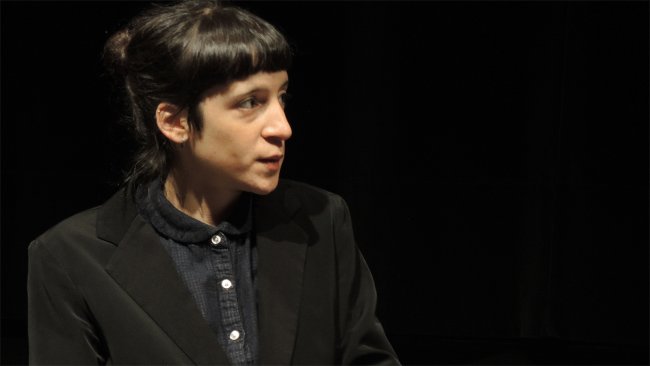Tú me abrasas
[…] «Tú me abrasas» feels as if he has gone beyond the limits of the human world, expanding these interactions to the natural and mineral realm.
Text: Öykü Sofuoğlu

«We play with the surface of things. We don't run away from them. We mutate. This is our destiny,» says Britomartis. In Cesare Pavese's book Dialoghi con Leucò (1947), she is incorporated into the endlessly moving, bubbly, restless waves of the Mediterranean along with the poet Sappho. In Matías Piñeiro's Tú me abrasas, they are back in their human forms again – in different bodies, in a different century, and in a different place. They continue to fulfil Britomartis’ destiny, and two artists, Pavese and Piñeiro, are here to assist them. Presented this year in Berlinale's Encounters section, Tú me abrasas – a nod to Sappho's Fragment 38, a line salvaged from among her numerous lost poems – marks the director's departure from “Las Shakespeariadas” (“The Shakespeare Reads”), his six-film cycle that focuses on various heroines from the English playwright's comedies. «Sea Foam», one of the dialogues featured in Pavese's book, where we see Sappho and the nymph Britomartis talking about their respective destinies and desires, as well as those of other women, serves as the Ariadne's thread to Piñeiro's narrative – a thread which the filmmaker playfully twists, tangles, and knots in order to guide and sometimes to lead us astray along the pages and between the lines.
As a filmmaker, Piñeiro has always been associated with mutations and transformations – to the point that his films would be the closest thing to what Ovidius would have done if he had wanted to pursue a career in cinematic arts. Not only are mythical heroes or Shakespearean characters (who were themselves influenced by Greek mythology) subjected to intertextual transformations through Piñeiro's lens, but languages, landscapes, bodies, and objects that inhabit our world are also imbued with the desire, love, and loss that these characters have experienced. They act as surfaces on which fantasies, dreams, and visions are projected or, rather, ingrained. This physical aspect seems to become even more tangible through Piñeiro's return to analogue format. Shot with a 16mm Bolex, Piñeiro's bright-coloured, warm, and welcoming images unfold like a summer breeze. Mostly tinted with hues of creams, off-whites, and light blues, they grant us a tactile sensation as we look at them, as if our eyes could touch the smooth surface of a book or feel the foamy residues of a dying wave.
While Piñeiro is usually likened to Jacques Rivette, by virtue of his theatrical explorations through cinema and his penchant for variations and reiterations, Tú me abrasas feels as if he has gone beyond the limits of the human world, expanding these interactions to the natural and mineral realm. We're no longer focused on the theatrics of the performance but on the rhymes and rhythms of poetry. Poetry is what connects Pavese to Sappho, and Sappho to Alfonsina Storni, an Argentine poet who (like Pavese and Sappho) took her own life, and to whom the film also alludes. Poetic influences in Tú me abrasas also shape the very distinctive reiterative editing: Piñeiro experiments with the images by turning them into visual syllables – the sequences become lines, and the film becomes a poem.
Tú me abrasas skilfully captures the fragmentary, elusive aspect of Sappho's writings. In addition to Sappho and Britomartis, the film introduces a biology student whose girlfriend has changed the lock to their house, leaving her unable to get inside. Who is this girl, and what is her place in the overall narrative? While we are provided with only bits and pieces of this story, the narrative gaps create new openings for us to project our interpretations, connections, and speculations. Just as Britomartis and Sappho discuss Calypso and Helena, we are invited to engage in a dialogue with Piñeiro's characters through our imagination. Although not explicitly addressed, one could argue that these gaps subtly allude to the historical condition of women, particularly when the speculative aspect of Sappho's suicide is mentioned. How rarely we got to hear their stories from their perspectives? How their journeys are always written by men, retrospectively shaping those unknown lives with their own desires, obsessions and fantasies?
Polyphonic would likely be the most accurate term to describe Piñeiro's film – voices from the past and present, both direct and indirect, interrupting one another or occasionally joining together. Moreover, the film itself mirrors the process through which Piñeiro merges the voices that came before him, creating a self-reflexive account of the work-in-progress, reminiscent of Pier Paolo Pasolini's Sopralluoghi in Palestina per il vangelo secondo Matteo (1965) or Appunti per un’Orestiade africana (1969). By searching, traveling, reading, exploring, rereading, digressing, and returning, Tu me abrasas finds its own voice, singing the songs of marine anguish for the restless ones who smile to themselves.
Info
Tú me abrasas | Film | Matías Piñeiro | ARG-ES 2024 | 64’ | Berlinale 2024
First published: March 04, 2024



